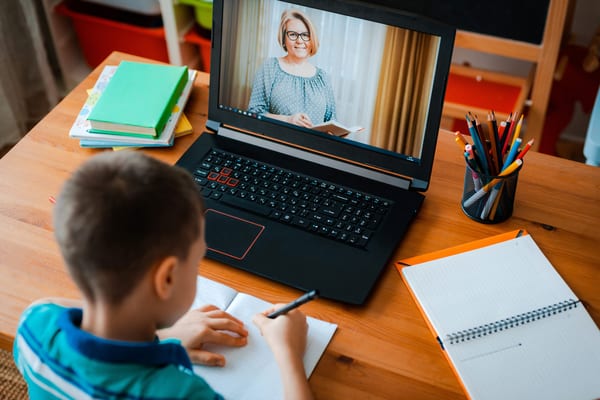Since March 2020, teachers have been incredible at adjusting their classes and education to online learning, as a result of the COVID-19 pandemic. Adapting to technology and a new way of life that we weren’t prepared for can create a lot of anxiety for everyone involved. Kids stopped playing with their friends at recess and had the rug pulled out from under everything normal they knew. Despite what some people think, this pandemic is still going on, and the future of education is uncertain.
A big question, as we were heading into the school year for everyone from nursery school age to grad school was: What is the safest way to make school happen for students and teachers? Should we keep school online or try to see what in-person learning is like during this time? What about a mix of both?

Even though I’m no longer in school, I couldn’t help but feel for those students and teachers who were immunocompromised. Students with disabilities will be at a disadvantage because their educational services, like occupational therapy and speech therapy, will be over video chat and not in real life. Those students still need their accommodations and services, no matter what their education situation is.
We have all seen college campuses open and close shortly after opening their doors because of the positive cases of COVID-19 and sending their students home to do online learning. Ms. Jennifer Fatone, an English teacher at The Wheatley School, says: “Of course, teaching online is not the same as teaching in-person. Nothing beats in-person classes, but I think it’s too dangerous.”
Personally, I do not think that schools should be open in-person during this time. As we were heading into the winter, flu season is coming soon, and I think there will be a surge of COVID-19 cases.
What Does The Future of Education Look Like For The Performing Arts?

One of the biggest transitions that have had to pivot during this time is performing arts. The performing arts are a live medium. So what do you do when you can’t perform for a live audience in person? College productions, senior recitals, and showcases have gotten canceled around the country.
Peter Thoresen, a voice teacher based in New York City, who has been teaching online pre-pandemic, says:
“I feel very fortunate because I’ve taught voice lessons online for several years, and I am grateful for the pre-existing skillset. Yet a major personal challenge during the first month of the pandemic was balancing and managing my energy. Up until that time, I would have an online day or afternoon, with in-person lessons the next day or in the evening—for balance.”
“Moving entirely to online voice lessons meant the immediate loss of critical spatial elements, diversity of experience in terms of levels, and where my eyes could and would go. And, most challenging, was that I was playing the piano far less than before. As someone who also accompanies their voice students, I am very fond of that particular collaborative element. I have, however, found new ways to make up for this and happily created and adapted to different types of collaborative experiences in our Zoom world.”
How Does A Performing Arts Teacher Take Care Of Themselves During This Time?
When asked what Thoresen was doing to take care of himself, he said:
“I prepare in breaks between lessons where and when I usually wouldn’t. Now I won’t teach longer than 2 hours without a 15-minute rest for my eyes, my neck, and back. I also stand and move throughout the lesson and take better advantage of supplemental technology (e.g. stands for my devices, etc.) that free me up from just being a singing/talking Zoom torso.”
“And sometimes—especially with my college students who are on Zoom for long stretches of time—I’ll simply ask them to share a momentary break with me and instruct them to take 20 seconds to look at something 20 feet away. We keep it simple.”
Also check: Brighterly
What Is The Future of Education Looking Like For Parents?
This time has been difficult for parents everywhere. Juggling childcare and a 9 to 5 working schedule can be difficult. Some parents have lost their jobs, and now they are worried about how they are going to pay for childcare. What about households with only one computer and multiple kids in various age groups?
Talima Evans is a mom of 4 boys and a tutor at Bronx Community College. Evans states:
“When this first happened, it was a shock to our family. I have 4 boys, so including the boys and my husband, we are a household of 6. Two of the boys are homeschooled, one goes to public school, and one is in trade school. We have three computers in our home, so we all had to compromise and take turns using the devices.”
As this pandemic continues and we get into flu season, I can see the cases of COVID-19 going up and schools having to go back online. The education system is changing for everyone involved. But first, I believe we have to give students access to the necessary technology and the books they need to succeed. Everyone’s needs are changing day by day and we all must be flexible with each other.


